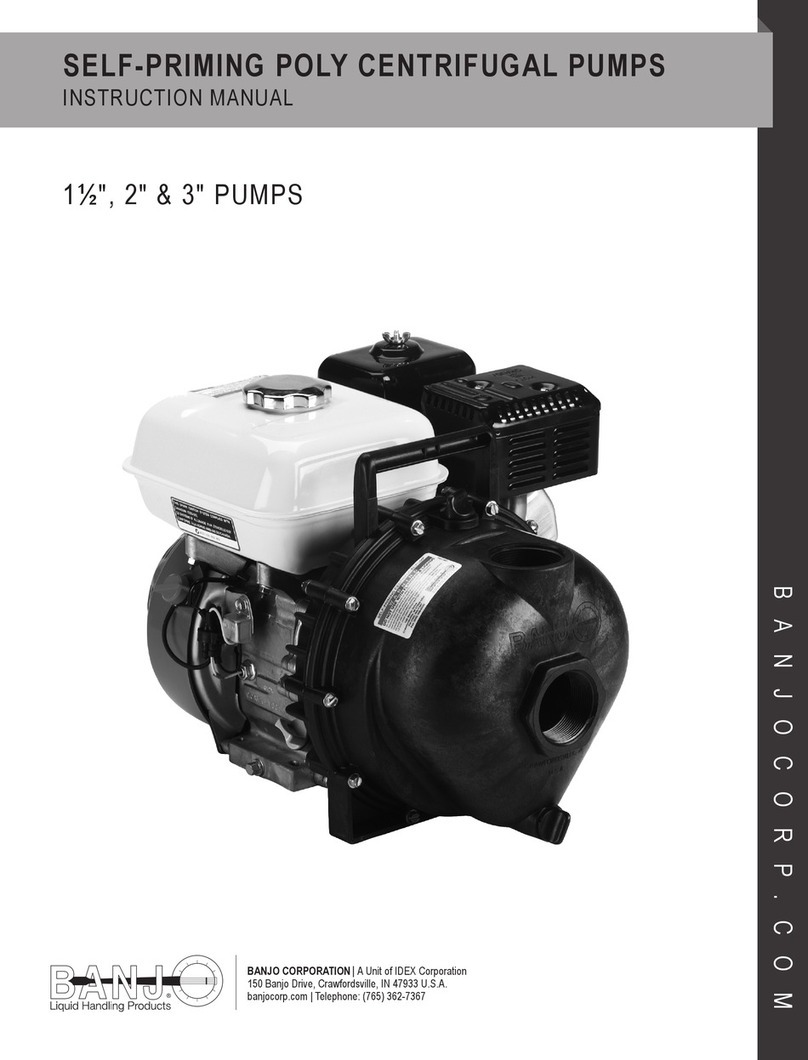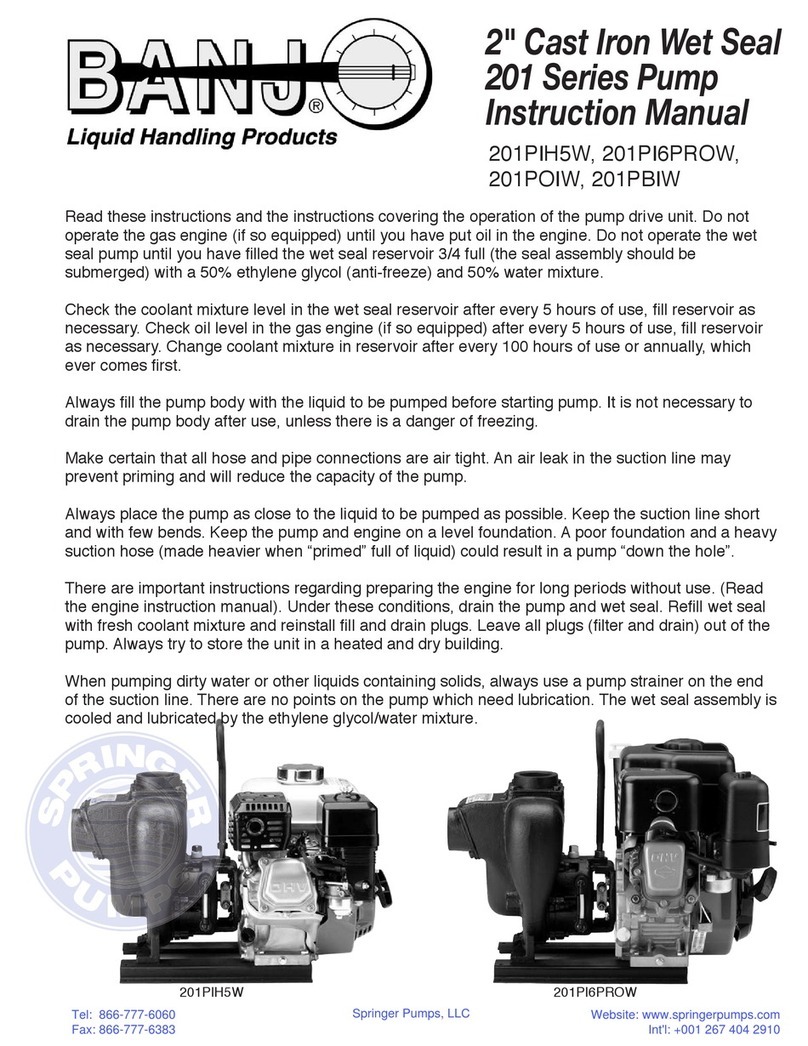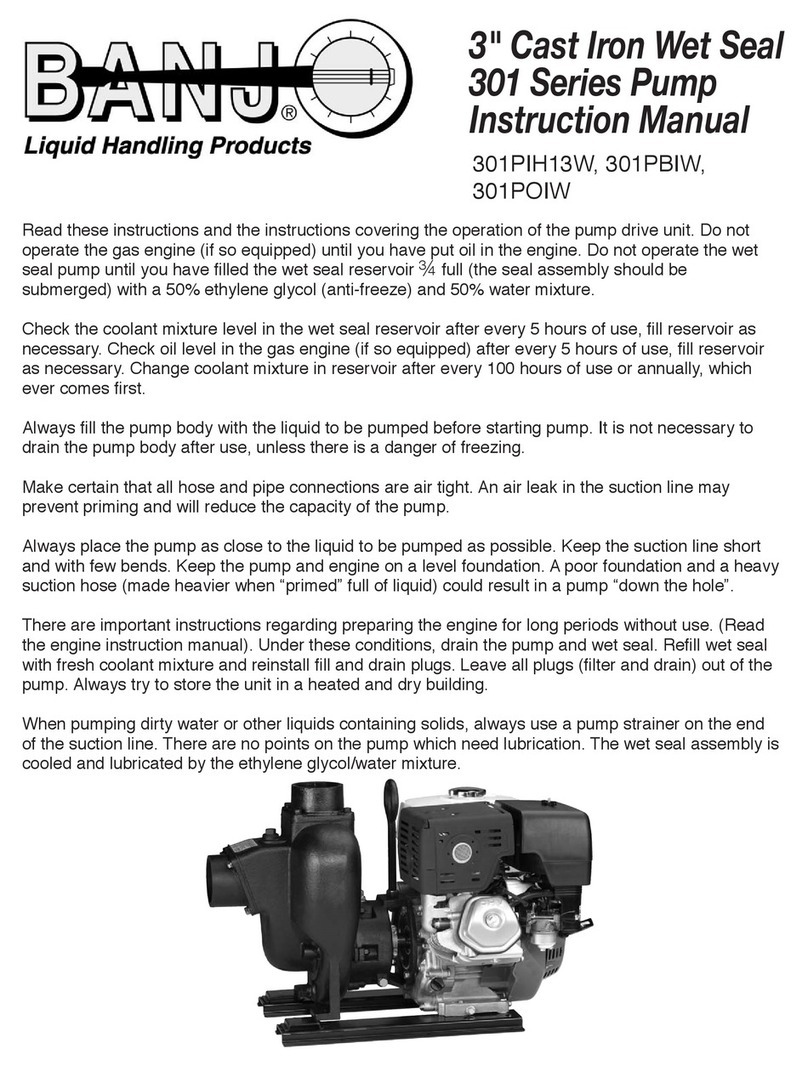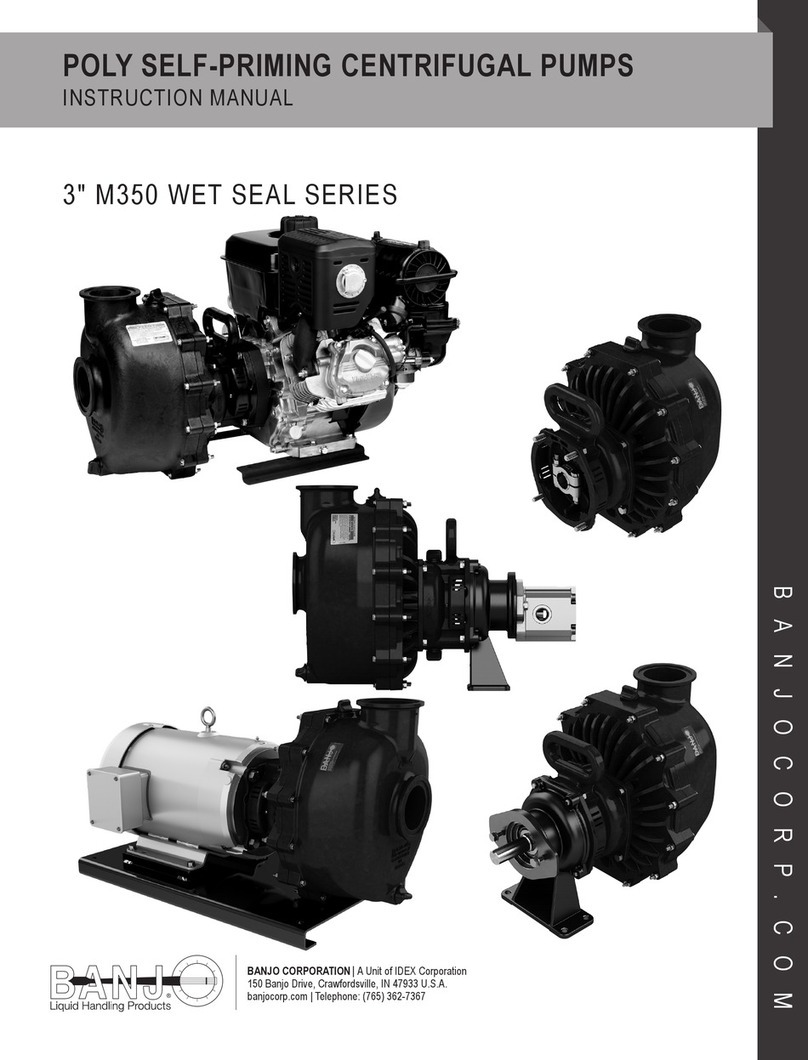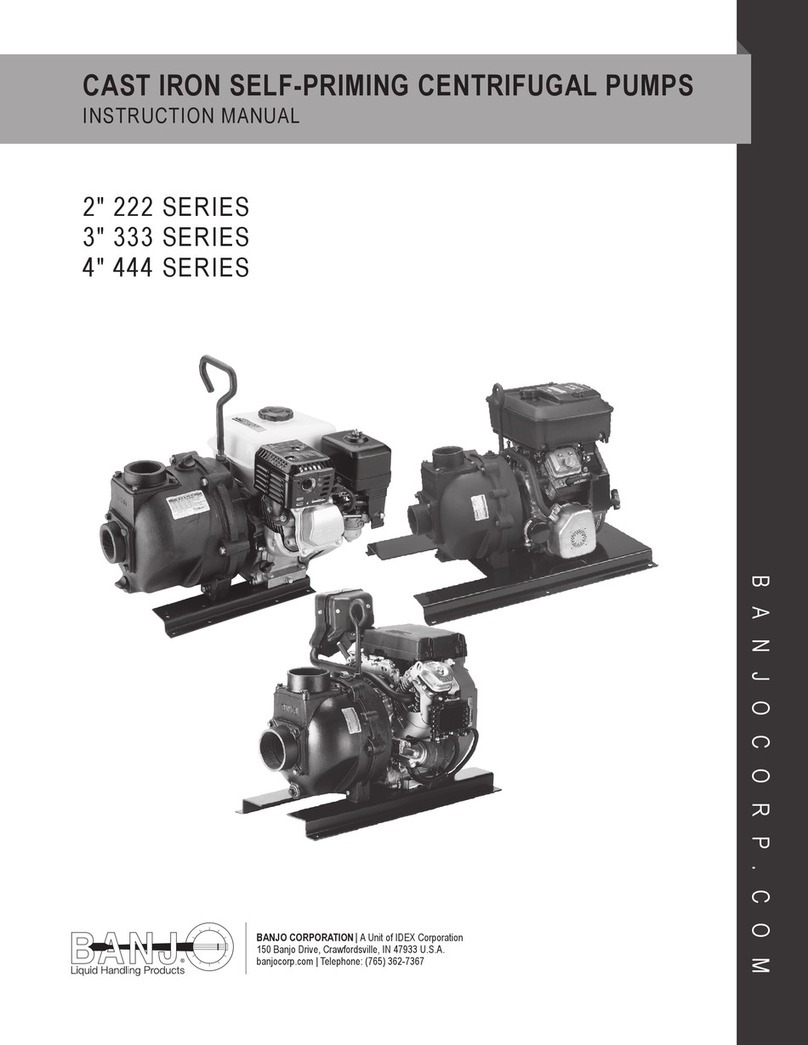
CONNECT WITH CONFIDENCE™2
OPERATION WARNING
Do not operate the gas engine (if equipped) until you
have put oil in the engine. This pump is designed to
tolerate incidental dry running without damage but
do not intentionally run the pump dry.
WARNING! DO NOT USE WITH
FLAMMABLE LIQUIDS.
Do not use ammable liquids. This pump is not
designed or produced to pump ammable liquids of
any kind. Failure to follow this warning can result in
explosion, serious bodily injury or death.
OVERVIEW
Read these instructions and the instructions covering operation of the pump drive unit.
The gas engine (if equipped) is shipped with no oil. Consult your owners manual for specic oil recommendations, maintenance
procedures, schedules, and troubleshooting. The maximum angle of operation for gas engine drive units is 25° in all directions. For
engine warranty service, contact your local engine dealer.
Make certain that all hose and pipe connections are airtight. An air leak in the suction line may prevent priming and will reduce the
performance of the pump.
Do not restrict the pump inlet. High volume pumps such as the Banjo M350 Series pumps should not have the inlet port or line
restricted. The pump should be plumbed with a 3" suction line. A 4" suction line may be used for better performance. Failure to follow
these instructions can result in pump cavitation and pump failure.
Always place the pump as close to the liquid to be pumped as possible. Keep the suction line short and with few bends. Keep the
pump and engine on a level foundation. A poor foundation and a heavy suction hose (made heavier when ″primed″ full of liquid) could
result in a pump ″down the hole″. It is not necessary to drain the pump body after use, unless there is a danger of freezing.
Antifreeze is needed to keep the pump seal cooled and lubricated. Check the coolant every 8 hours of use or when the gas tank is
lled if so equipped. Change the antifreeze every 500 hours or annually. When pumping dirty water or liquids containing solids, always
use a basket strainer on the end of the suction line.
Engine warranty service available at authorized Honda® & Briggs and Stratton® Dealers.
*Note: Do NOT operate pump without the supplied EPA approved fuel tank and lines.
WARNINGS
STORAGE WARNING
There are important instructions regarding the
preparation of the engine for long periods
without use (reference the engine owners manual).
Before long periods of storage, the pump should
be ushed with clean water and drained. Leave all
plugs (ll and drain) out of the pump. Always store
the pump in a heated and dry building.


















